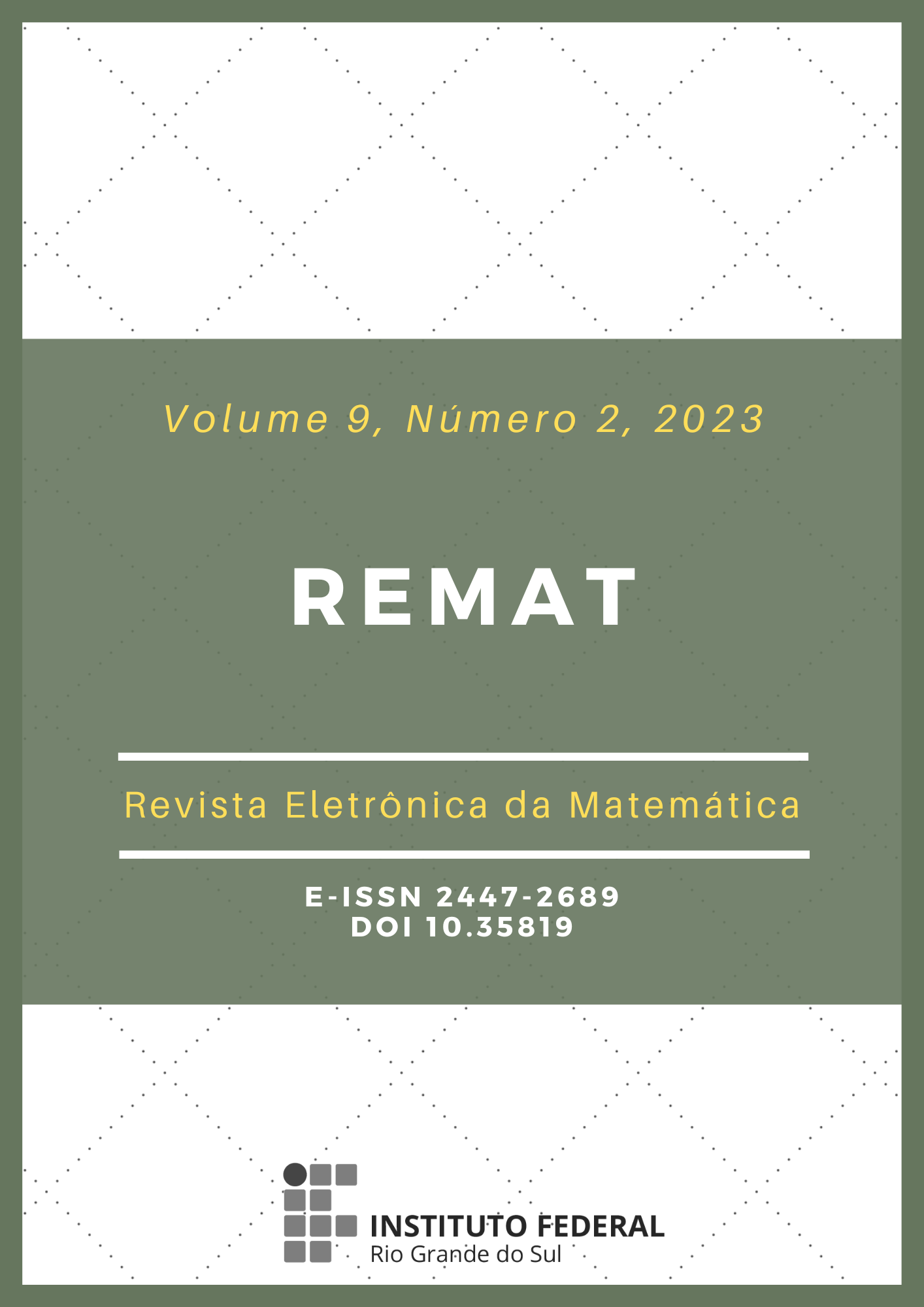The Sumatra-Andaman Tsunami in Banda Aceh: A Linear Model for Representation
DOI:
https://doi.org/10.35819/remat2023v9i2id6645Keywords:
wave speed, wave energy, linear modelAbstract
The Sumatra-Andaman earthquake that occurred on December 26, 2004 was the second largest earthquake in the past 40 years, with a moment magnitude of 9.1 - 9.3. The rupture took place at a depth of 1.3 km along a large boundary fault between the Indian and Burma plates. The fault slip reached up to 20 meters near Banda Aceh, Sumatra Island, and was more rapid compared to the northern end between the Indian Plate and the Andaman archipelago, where landslide took almost one hour to reach from 7 to 20 meters. Based on this data and other observations, it was possible to estimate that the main tsunami originated approximately 390 km from Banda Aceh city. Although the energy transmitted by the simple harmonic waves adopted in this study was shorter than that reported by other references, it was still significant. The estimated arrival time for the tsunami in Banda Aceh using a simple model was reasonably consistent with the actual observation time. This agreement suggests that the origin region of the estimated in this study is likely within the most probable starting point of the tsunami. The wave amplitude near the coast, as estimated by the model, fell within the observed range reported by the references. The methodology developed in this study seems to be suitable for obtaining initial estimates of several important parameters involved in events of this nature.
Downloads
References
AMMON, C. J.; KANAMORI, H.; LAY, T; VELASTCO, A. A. The 17 July 2006 Java tsunami earthquake. Geophysical Research Letters, v. 33, n. 24, p. 1-5, 2006. DOI: https://doi.org/10.1029/2006GL028005.
BILHAM, R. A Flying Start, Then a Slow Slip. Science, v. 308, n. 5725, p. 1126-1127, 2005. DOI: https://doi.org/10.1126/science.1113363.
CHENEY, W.; KINCAID, D. Numerical Mathematics and Computing. 6. ed. United States: Thomson Brooks/Cole, 2008.
DEAN, R. G.; DALRYMPLE, R. A. Water Wave Mechanics for Engineers and Scientists. v. 2. Singapore: World Scientific, 1991.
DEBNATH, L.; BHATTA, D. Integral Transforms and Their Application. 3. ed. New York: CRC Press, 2015.
FOX, R. W.; MCDONALD, A. T.; PRITCHARD, P. J.; LEYLEGIAN, J. C. Introdução à Mecânica dos Fluidos. 8. ed. São Paulo: LTC, 2010.
GAHALAUT, V. K.; NAGARAJAN, B.; CATHERINE, J. K.; KUMAR, S. Constraints on 2004 Sumatra-Andaman earthquake rupture from GPS measurements in Andaman-Nicobar Islands. Earth and Planetary Science Letters, v. 242, n. 3-4, p. 365-374, 2006. DOI: https://doi.org/10.1016/j.epsl.2005.11.051.
GUIDORIZZI, H. L. Um Curso de Cálculo. 5. ed. São Paulo: LTC, 2001.
HELENE, O.; YAMASHITA, M. T. Understanding the tsunami with a simple model. European Journal of Physics, v. 27, n. 4, p. 855-863, 2006. DOI: https://doi.org/10.1088/0143-0807/27/4/016.
HOWARD, A.; RORRES, C. Álgebra Linear com Aplicações. Trad.: Claus Ivo Doering. 10. ed. Porto Alegre: Bookman, 2012.
LAY, T.; KANAMORI, H.; AMMON, C. J.; NETTLES, M.; WARD, S. N.; ASTER, R. C.; BECK, S. L.; BILEK, S. L.; BRUDZINSKI, M. R.; BUTLER, R.; DESHON, H. R.; EKSTRÖM, G.; SATAKE, K.; SIPKIN, S. The Great Sumatra-Andaman Earthquake of 26 December 2004. Science, v. 308, n. 5725, p. 1127-1133, 2005. DOI: https://doi.org/10.1126/science.1112250.
MANGARITONDO, G. Explaining the physics of tsunamis to undergraduate and non-physics students. European Journal of Phisics, v. 26, p. 401-407, 2005. DOI: http://dx.doi.org/10.1088/0143-0807/26/3/007.
MERRIFIELD, M. A.; FIRING, Y. L.; AARUP, T.; AGRICOLE, W.; BRUNDRIT, G.; CHANG-SENG, D.; FARRE, R.; KILONSKY, B.; KNIGHT, W.; KONG, L.; MAGORI, C.; MANURUNG, P.; MCCREERY, C.; MITCHELL, W.; PILLAY, S.; SCHINDELE, F.; SHILLINGTON, F.; TESTUT, L.; WIJERATNE, E. M. S.; CALDWELL, P.; JARDIN, J.; NAKAHARA, S.; PORTER, F.-Y.; TURETSKY, N. Tide gauge observations of the Indian Ocean tsunami. Geophysical Research Letters, v. 32, p. L09603, 2004. DOI: https://doi.org/10.1029/2005GL022610.
SANTOS, M. L. Tsunami: Que Onda é Essa? Física na Escola, v. 6, n. 2, p. 8-11, 2005. Available in: http://www.sbfisica.org.br/fne/Vol6/Num2/a04.pdf. Access at: November 27, 2023.
SHEARER, P.; BURGMANN, R. Lessons Learned from the 2004 Sumatra-Andaman Megathrust Rupture. Annual Review of Earth and Planetary Sciences, v. 38, p. 103-131, 2010. DOI: https://doi.org/10.1146/annurev-earth-040809-152537.
STOKER, J. J. Water Waves: The Mathematical Theory with Applications. New York: Interscience Publishers, 1957.
TORO, E. F. Riemann Solvers and Numerical Methods for Fluid Dynamics: A Practical Introduction. Berlin: Springer, 2009. DOI: http://dx.doi.org/10.1007/b79761.
VARSOLIWALA, Archana C.; SINGH, Twinkle R. Mathematical modeling of tsunami wave propagation at mid ocean and its amplification and run-up on shore. Journal of Ocean Engineering and Science, v. 6, n. 4, p. 367-375, 2021. DOI: https://doi.org/10.1016/j.joes.2021.03.003.
YOUNG, R. A. Introduction to the Rietveld Method. textit{In: YOUNG, R. A. (ed.). The Rietveld Method. New York: International Union of Crystallography, 2002.
Downloads
Published
Issue
Section
License
Copyright (c) 2023 REMAT: Revista Eletrônica da Matemática

This work is licensed under a Creative Commons Attribution 4.0 International License.
REMAT retains the copyright of published articles, having the right to first publication of the work, mention of first publication in the journal in other published media and distribution of parts or of the work as a whole in order to promote the magazine.
This is an open access journal, which means that all content is available free of charge, at no cost to the user or his institution. Users are permitted to read, download, copy, distribute, print, search or link the full texts of the articles, or use them for any other legal purpose, without requesting prior permission from the magazine or the author. This statement is in accordance with the BOAI definition of open access.













 https://orcid.org/0000-0002-0893-7426
https://orcid.org/0000-0002-0893-7426


















